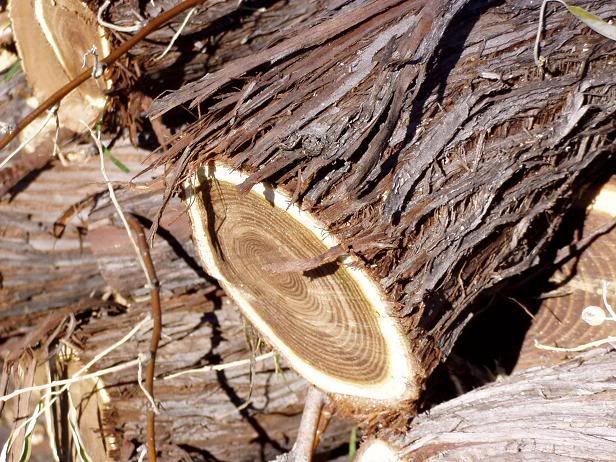Google doesn't have much on this species and BTU data on it is scarce as hens teeth. Here's my latest catch:

Not sure, but there seems to be more than one variety, and this one is the better because it grows larger and has more mass to salvage for firewood. Three of these mature trees were cut down at a home and the owner got a discount for hauling the bulk away, so he called me. It's about the same color and density as English walnut and has a very thin light-colored sapwood but very dark heartwood. The sapwood on the above Pic is actually thicker than most of the logs that I cut. The bark tends to peel off, kind of long. Seems to split very well after minimal drying.
I've burned samples of it in the past with success but never in large quantities. Best part about this collection is that the tree service shredded up all the branches less than 4" across and left the rest for me--about two full truckloads after I bucked it all.
Any firewood experiences or recommendations that you've had with it? I imagine I'll be mixing it with my old standbys: elm, maple, ash, cottonwood, hackberry, locust, etc. WDYT? Any BTU estimates or comparisons?

Not sure, but there seems to be more than one variety, and this one is the better because it grows larger and has more mass to salvage for firewood. Three of these mature trees were cut down at a home and the owner got a discount for hauling the bulk away, so he called me. It's about the same color and density as English walnut and has a very thin light-colored sapwood but very dark heartwood. The sapwood on the above Pic is actually thicker than most of the logs that I cut. The bark tends to peel off, kind of long. Seems to split very well after minimal drying.
I've burned samples of it in the past with success but never in large quantities. Best part about this collection is that the tree service shredded up all the branches less than 4" across and left the rest for me--about two full truckloads after I bucked it all.
Any firewood experiences or recommendations that you've had with it? I imagine I'll be mixing it with my old standbys: elm, maple, ash, cottonwood, hackberry, locust, etc. WDYT? Any BTU estimates or comparisons?




